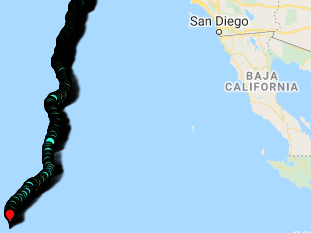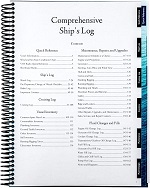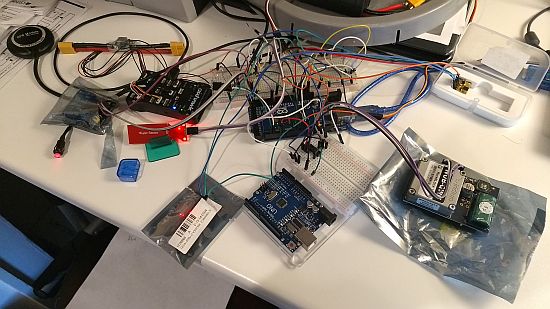Navigation tuned and ready to go!
Today was the third and final navigation testing session. The first time, LoCARB’s motor pod was too buoyant, the second, I could not get the PID values working correctly, this third time, LoCARB tracked and steered splendidly.
The autonomous navigation testing was done at Lake Merced in San Francisco since its only about 15 minutes drive away from home. There’s very little boat/kayak traffic during weekday mornings, so we packed up the family and dropped LoCARB into the water. Conditions were nice, sunny with little wind – perfect conditions. Being that LoCARB is 125lbs, loading it up into a van is not really an easy thing to do…and moving the awkward shaped hull over land just sucks. Really.
Anyways, back to the autopilot navigation. If you look at way-point #4, i’m testing a hard left-hand turn, and it performed exactly like the worksheet predicted! I’m using a P of 2, I of .1, and a D of 0.
This is a screenshot of a PID worksheet that Damon (the maker of Seacharger) provided me, considering the trouble I was having tuning the PID for LoCARB. Hes such an amazing resource for anyone building their own autonomous boat, and hes definitely someone who goes out of his way to help. Thanks Damon! If you’re interested in anything autonomous boat related, please contact Damon at https://www.bluetrailengineering.com/
Tracking is pretty true with weaving kept to a minimum. Top speed is 2 knots, which is what I was estimating given the weight and bulk of the boat/power requirements. I was also able to do a last real world test to ensure the satellite to web communication magic was operating correctly (it was!).
And here is a video of LoCARB taking a hard right turn (steered manually via RC transmitter). Before launch, LoCARB will have any RC components removed from its electronics box.
Today was a great day. LoCARB is ready to roll.







